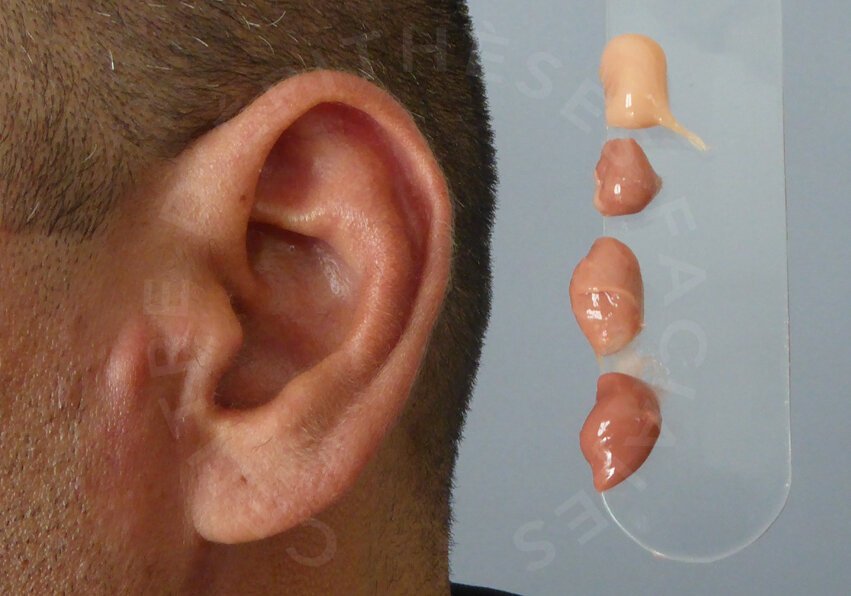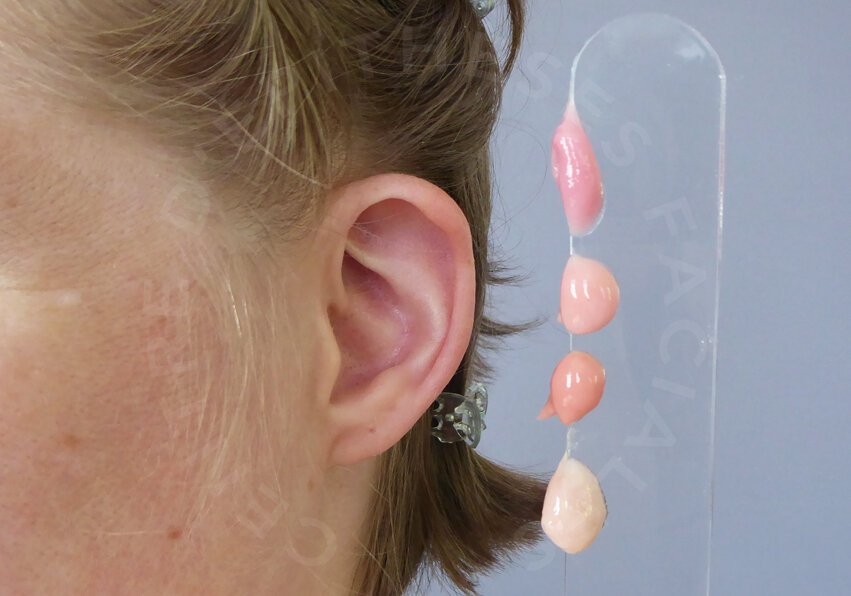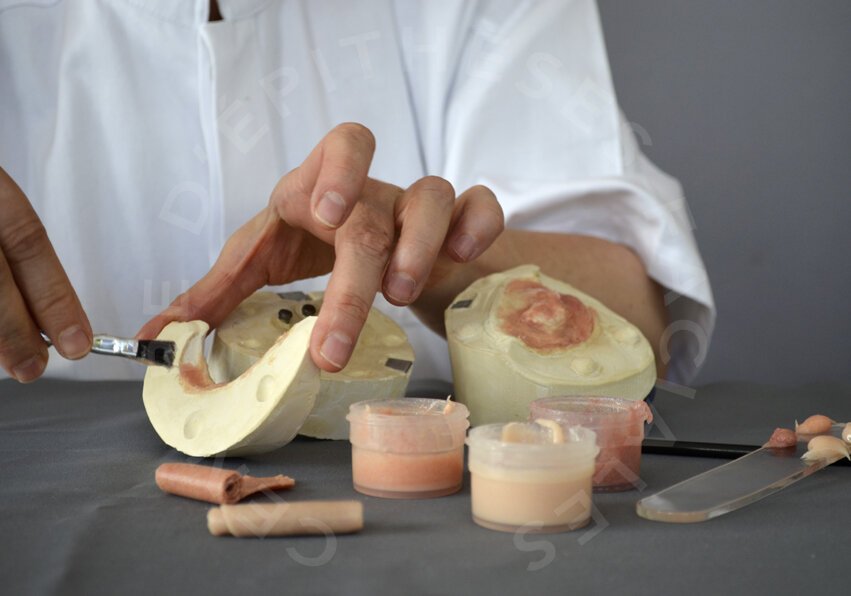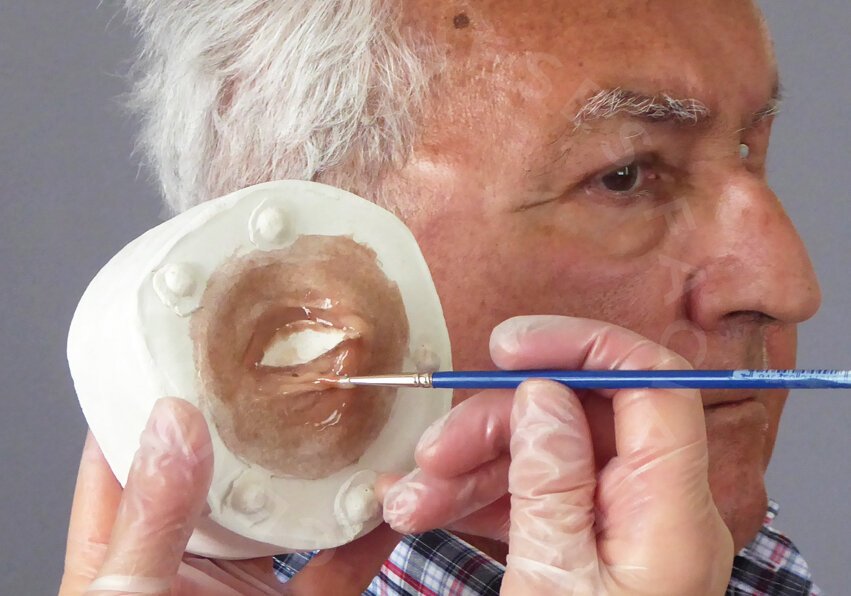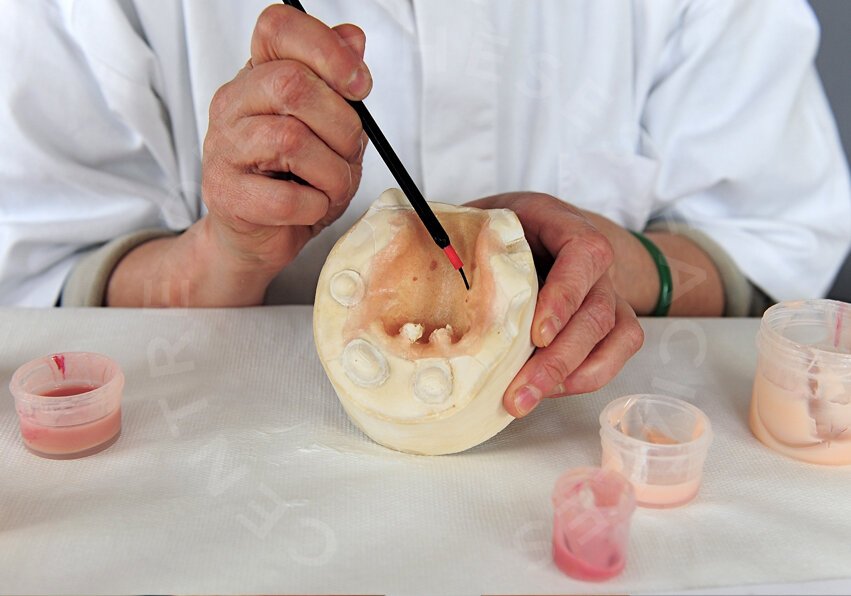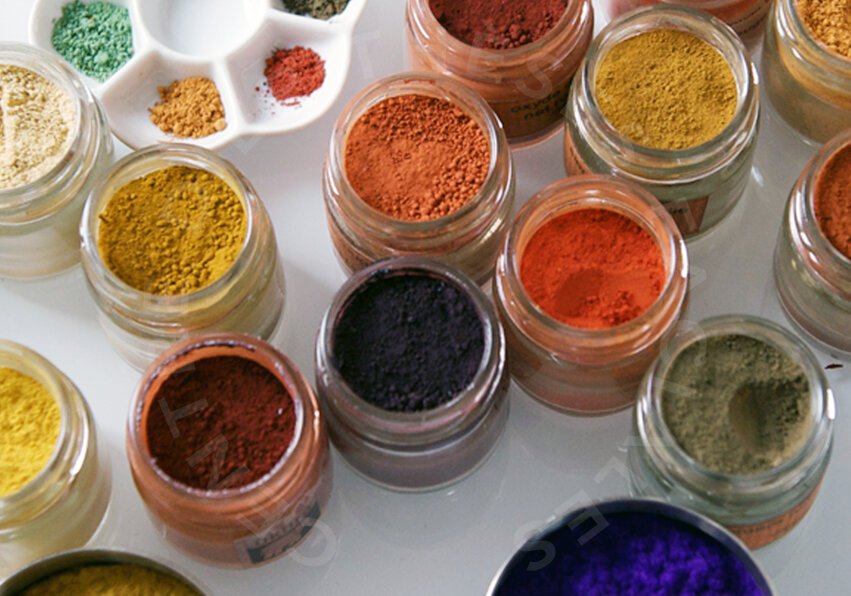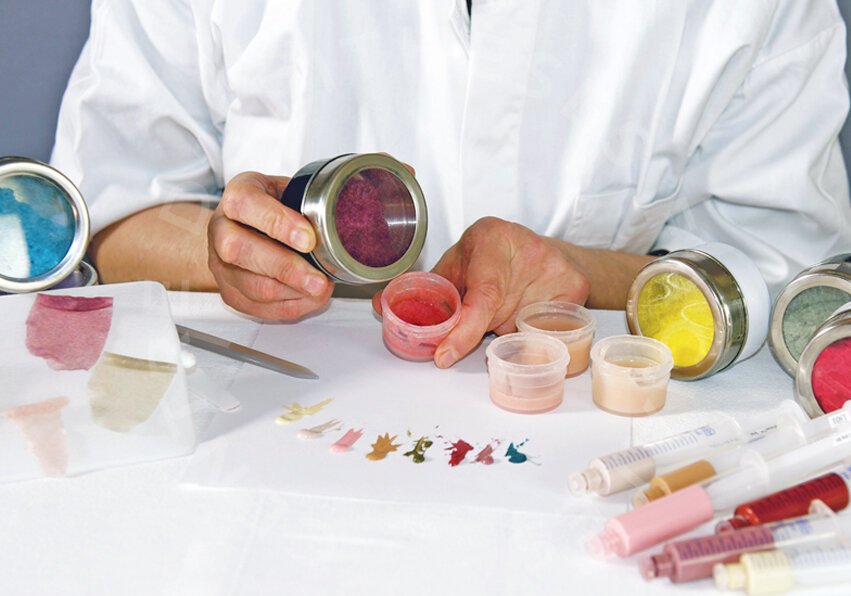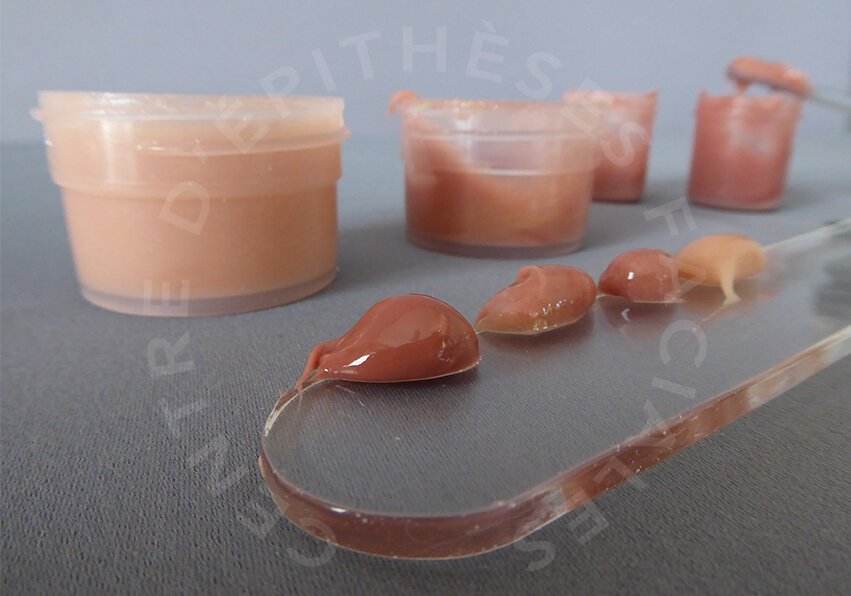Colouring phase
Skin colours
To reproduce life-like, translucent skin, we mix transparent dyes and more opaque dyes alternately.
Silicones
A broad array of silicones is available and we combine them according to protocols that we have set up over the years. We then insert ingredients which transform transparent silicone into the skin colour of each patient. A certain expertise is required to juggle with primary colours and insert the multi-coloured fibres into each silicone selected. Our patients are often amused to discover the blue, red, yellow, orange and green pigments that make up the colour of their skin.
Creating a bespoke colour chart
Skin pigmentation is not uniform. We need several shades to obtain a bespoke colour chart for each patient (base, surface and depth of colours, prominent and hollow colours, freckles etc.) in order to reproduce the subtle nuances of the skin.
Applying the silicones in the mould
Coloured silicones are painted layer by layer in the mould to obtain the translucent appearance of skin and give the prosthesis a natural, life-like appearance.
This is a crucial stage to ensure the prosthesis blends naturally into the face.
The perfect life-like nature of our prostheses stems from the combination of our artistic expertise and our technical experience.
Selecting silicones and mixing the shades
We use a broad variety of medical grade silicones selected according to their properties and the result desired. If the skin is fragile and delicate, we will use very soft silicones. Slightly firmer silicones will be selected for the cartilaginous areas, the periphery and the sections surrounding the magnets.
The colour formula is specific to each patient. Several techniques can be used according to the type of prosthesis and the properties of the silicones selected to meet each patient’s needs as precisely as possible. The colours may be painted in the mould or applied in a series of layers in keeping with an innovative process. In all cases, we try to achieve the colour and transparency of the skin and the particularities of each individual complexion.
After being baked in an oven for a certain time, the prosthesis is taken out of the mould. The various shades are already integrated, but sometimes minor finishing touches are necessary (painting tiny veins on the prosthesis or inserting natural hair to create eyelashes or an eyebrow).
Photos 1 to 9: Pigments are inserted into the silicone and mixed to obtain the various shades specific to each patient. They are then painted layer by layer into the mould.

